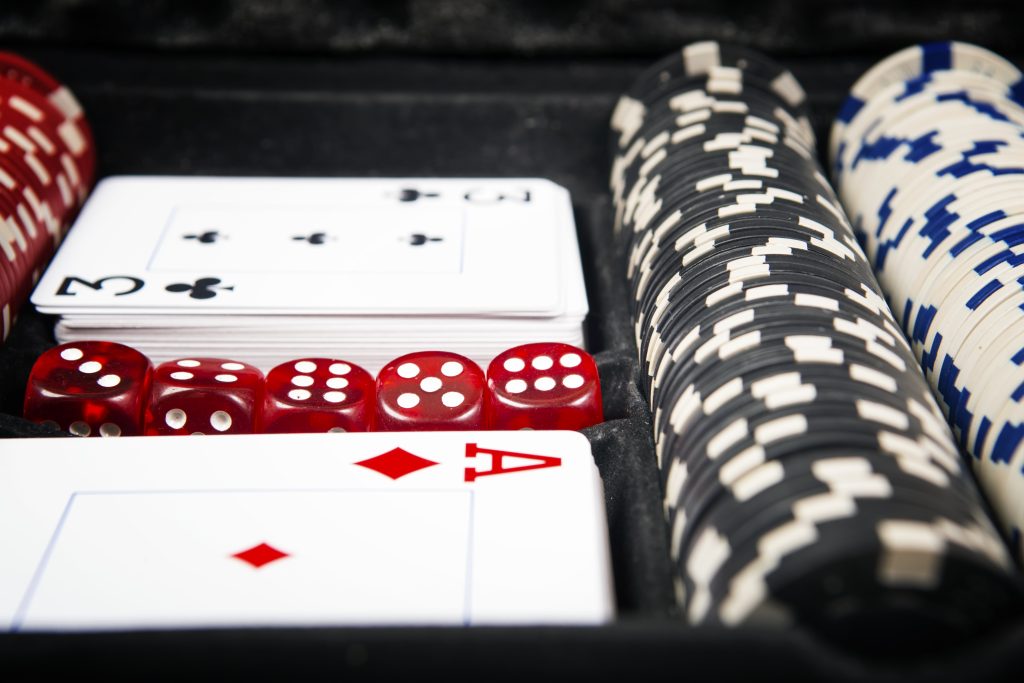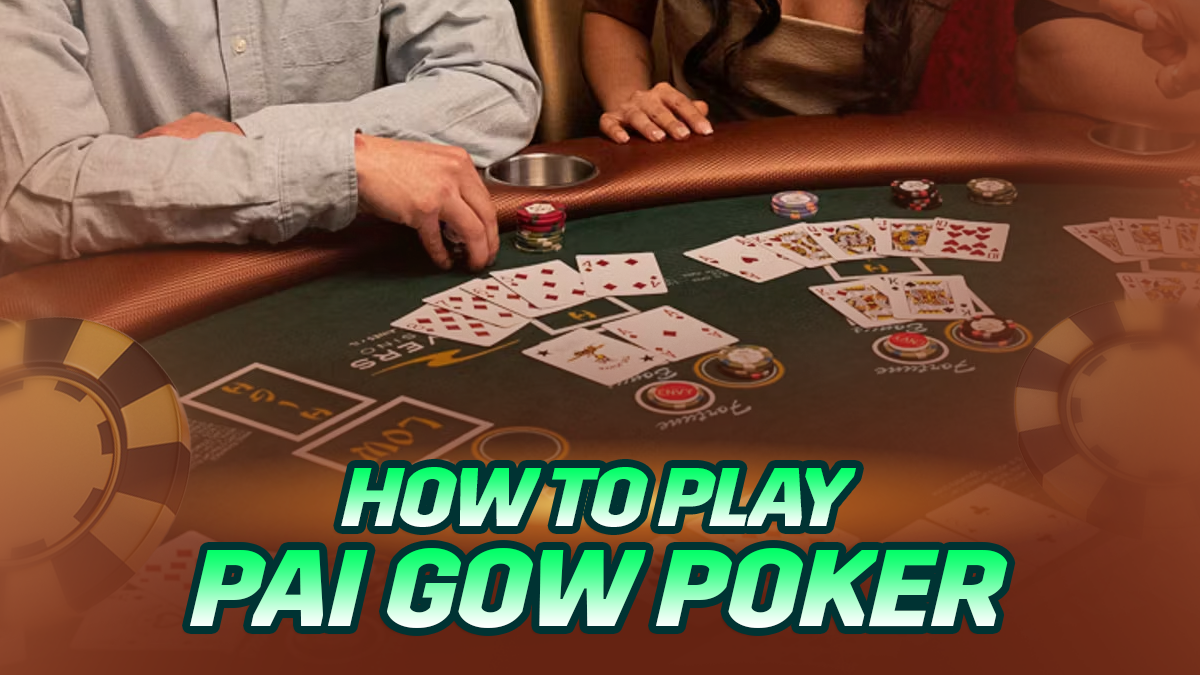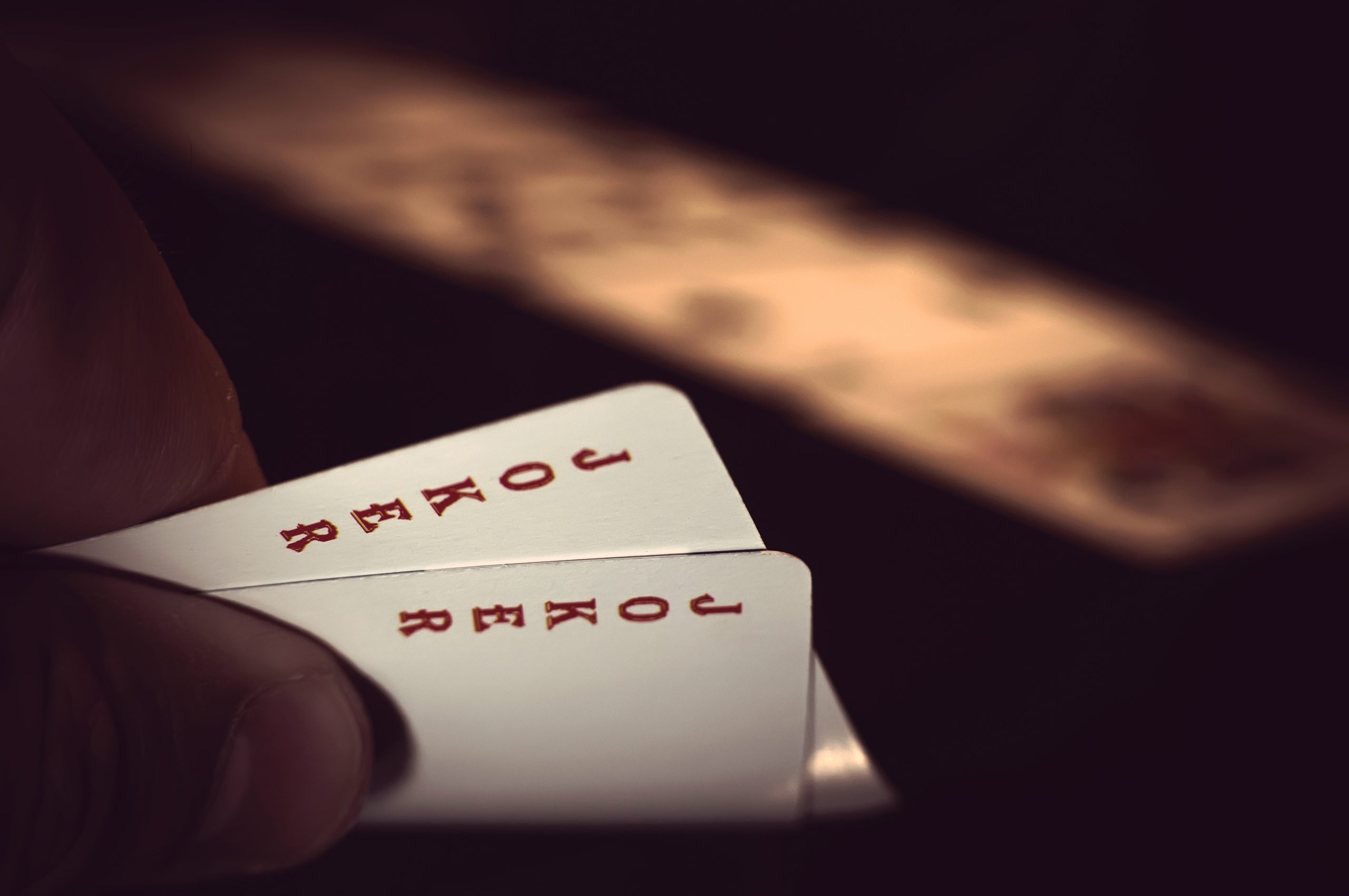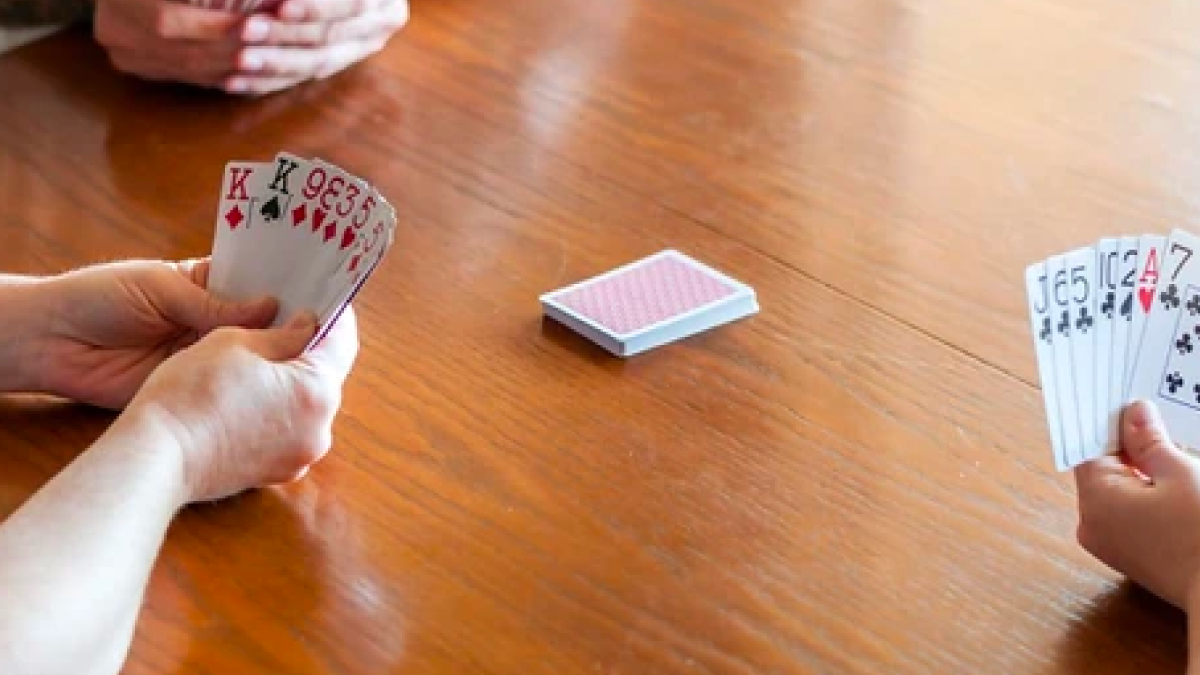Table of Contents
TogglePai Gow Poker game is best known as Asian poker. As you might have guessed, it is a variant of the Poker game. Poker hands from the original game are used in Pai Gow. Hence, learning how to play Pai Gow poker should be easy for traditional poker players. Hand rankings from traditional poker play a great role.
Traditionally, Pai gow games are played with Chinese dominoes. However, this variation is played with a standard deck of 52 cards. So, it is also called double-hand poker. Pai Gow poker rules can be a bit tricky for beginners. But if you know the basics, it is a fun game to play.
Pai Gow Poker Rules
- No Sharing Hands – You cannot show or talk about your cards with other players.
- Foul Hands Lose – You lose automatically if:
- Your two-card hand is stronger than your five-card hand.
- You set the wrong number of cards in each hand.
- Copy Hands Favor the Banker – If your two-card or five-card hand is exactly the same as the banker’s, the banker wins.
- Commission on Winnings – If you win, the casino takes a 5% commission from your winnings. A winning wager pays even money. If you lose or push, there is no commission.
- According to Pai Gow Poker rules, the dealer can help you set your hand. But they aren’t responsible if you lose.
Terminology
When learning how to play Pai Gow Poker, there are some new terms to take note of.
Banker – The player covering bets for the hand. This role rotates among players and the dealer.
Set the Hand – Arranging the seven dealt cards into two hands: a five-card high hand and a two-card low hand.
High Hand – The primary five-card hand, which must always rank higher than the two-card hand.
Low Hand – The secondary two-card hand, which must always rank lower than the five-card hand.
Fouled Hand – A hand that is set incorrectly, where the low hand outranks the high hand, making it invalid.
House Way – A predefined strategy for setting hands. Dealers must always follow this guideline when arranging their hands.
Joker – A semi-wild card used to complete a straight, flush, or straight flush. If not contributing to these, it is automatically considered an Ace.
Copy – When a player’s hand has the same ranking as the dealer’s hand.
Push – A tie between the player and the dealer, resulting in no win or loss.
Pai Gow Insurance – An optional side bet independent of the primary wager. Players win this bet if their hand meets a specific ranking according to the posted payout structure.
Read More: Understand The Key Differences Between Poker and Blackjack
How to Play Pai Gow Poker

Source: Timof /shutterstock
Pai Gow Poker game is played with a 52-card deck plus one joker. Up to six players and a dealer can sit at the table. The goal is to beat the banker, who can be the dealer, another player, or a player-dealer team.
The Objective
The goal of the Pai Gow Poker game is to beat the dealer by having two hands that are both stronger than the dealer’s two hands. The stronger hand is called the High Hand, and the weaker hand is called the Second Highest Hand.
To decide which hand is stronger, the game follows poker rules, which rank hands based on card combinations. Knowing how poker works can help you make better choices in the game.
Rules to Deal Cards
You are dealt seven cards and must split them into two hands:
- A five-card “High Hand” (aka the backhand or big hand).
- A two-card “Low Hand” (aka the front hand or small hand).
Your High Hand must always be stronger than your Low Hand. For example, if your Low Hand is a pair of fives, your High Hand must have something stronger than that.
Once everyone has set their hands, the dealer reveals both their hand and the banker’s hand. There are three possible outcomes:
- You win both hands → You win the bet.
- You lose both hands → You lose the bet.
- Your one hand wins and loses the other → It’s a push, and no money exchanges hands.
If you and the dealer have the same hand, ties go to the dealer.
Dealing the Cards
After shuffling the deck, the dealer makes seven face-down piles of seven cards. Since only six players and the dealer get cards, four cards are left unused (called the muck or discard pile).
Before dealing, the dealer shakes a dice cup or uses a random number generator to decide who gets the first set of cards. The dealer then distributes the cards in a counter-clockwise direction.
Setting Your Hands
How to play Pai Gow Poker, after receiving your seven cards? Arrange them into two hands:
- Your five-card High Hand (stronger hand).
- Your two-card Low Hand (weaker hand).
Once you set your hands, you place them face down on the table and cannot touch them again. Your cards must stay visible to the dealer at all times.
Comparing Hands & Winning the Game
Once all players have set their hands, the dealer reveals and arranges the House hand as per the house rules. Your hands are compared to the House hand:
- If both your hands are stronger, you win.
- If both your hands are weaker, you lose.
- If you win one hand but lose the other, it’s a push, and no money exchanges hands.
To win money, both of your hands must beat the House’s hands. If only one of your hands wins, you don’t lose. But you don’t win either.
Hand Rankings (Highest to Lowest)
| Rank | Hand Name | Description |
| 1 | Five Aces | Four Aces + Joker (highest possible hand). |
| 2 | Royal Flush | A-K-Q-J-10, all of the same suit. |
| 3 | Straight Flush | Five consecutive cards of the same suit (A-2-3-4-5 is the highest, K-Q-J-10-9 is the second highest) is a straight flush. |
| 4 | Four of a Kind | Four cards of the same rank. |
| 5 | Full House | Three of a kind + one pair. |
| 6 | Flush | Five cards of the same suit (not in sequence). |
| 7 | Straight | Five consecutive cards of any suit (A-K-Q-J-10 is the highest, A-2-3-4-5 is the second highest). |
| 8 | Three-of-a-Kind | Three cards of the same rank. |
| 9 | Two Pair | Two sets of matching cards. |
| 10 | One Pair | Two matching cards of the same rank. |
| 11 | High Card | If there are no combinations, the highest card wins. |
Betting & House Edge
Betting in Pai Gow Poker rules follows a single upfront wager system, meaning players place their bet before the cards are dealt. Unlike other poker games, there are no additional rounds of betting. The game also includes side bets and a 5% commission on winnings, which affects payouts.
Standard Betting
- Players must place a primary bet before the deal.
- Winning hands pay even money, but casinos take a 5% commission on winnings.
- The house edge is around 2.84%, but playing as the banker lowers it to 1.42%.
Side Bets & Bonus Bets
Many online and casino Pai Gow Poker rules offer side bets for extra payouts:
- Fortune Pai Gow: Pays based on the best seven-card hand in play.
- Jackpot Pai Gow: Large payouts for rare hands like a natural royal flush with a pair of Aces.
- Dealer Bonus: Pays based on the dealer’s seven-card hand ranking.
- Ace High Bonus: Pays when the dealer has an Ace-high hand.
- Envy Bonuses: Pay players if another player (not the dealer) gets four-of-a-kind or better.
Since the fortune bonus wager offers additional payout opportunities, many players place this bet for higher rewards when they have a strong starting hand.
Commission-Free Pai Gow
Some casinos offer commission-free Pai Gow games.
- The house only wins on a copy hand or specific dealer hand rankings.
- Instead of a 5% commission, the casino balances the odds differently.
Pai Gow Poker Game Strategies
Pai Gow Poker requires careful decision-making to maximize your chances of winning. Unlike other poker variants, success in Pai Gow comes down to how well you arrange your two-card low hand and five-card high hand. These strategies will help you make the best decisions to beat the dealer.
1. Properly Set High and Low Hands
One of the most fundamental rules in Pai Gow Poker is that your five-card high hand must be stronger than your two-card low hand. If you violate this rule, you forfeit the hand (or the dealer may reset it for you, depending on the casino’s policy).
If your hand lacks any pairs, straights or flushes, place the highest-ranked card in the five-card hand and use the next two highest-ranked cards for the low hand.
If you only have a single pair, keep it in your high hand while placing your two strongest remaining cards in the low hand.
When dealt three pairs, always move the highest pair to the low hand to strengthen it.
2. Splitting Pairs
If you are dealt two pairs, you must decide whether to split them or keep them together in your five-card hand. The general rule is to split higher-ranked pairs and keep smaller pairs together.
Jacks through Aces should always be split, while Sevens through Tens should only be split if you don’t have an Ace—otherwise, keep them together and use the Ace in the low hand.
For pairs Sixes and below, split only if you don’t have an Ace. A single Ace in the low hand offers better balance.
3. Playing Three of a Kind
You should usually keep a three-of-a-kind together in your five-card high hand. The only exception is when you are dealt three Aces. In this case, split them— place two Aces in the high hand and move the remaining Ace to the low hand along with your next highest card. This balances the strength of both hands and increases your chances of winning both.
4. Playing a Full House
A full house consists of three of a kind plus a pair. The optimal strategy is to split the full house, placing the three of a kind in the high hand and moving the pair to the low hand.
However, if your hand contains two pairs in addition to the three of a kind, move the highest pair to the low hand while keeping the other pair and three of a kind together.
5. Playing Straights and Flushes
If you are dealt a straight or a flush, keep it intact in your five-card hand. The only time you should consider breaking it is when you also hold two pairs. In such cases, follow the two-pair strategy to determine whether splitting will give you a stronger overall hand.
If you have a straight or flush with a pair of tens or better, consider breaking it to create a stronger low hand with an Ace-King combination.
6. Handling Four of a Kind
The decision to split four of a kind depends on the value of the cards. If you have four of a kind consisting of sixes or lower, keep them together in your five-card hand. If you have four of a kind from sevens to tens, split them unless you have an Ace or higher for your low hand.
For face cards (Jacks, Queens, Kings, and Aces), always split them unless you have an additional pair available to strengthen the low hand.
7. Five Aces Rule
If you are dealt five Aces (including the Joker), always split them unless you also have a pair of Kings. In that scenario, move the Kings to the low hand while keeping the Aces in the high hand. This adjustment increases the likelihood of winning both hands rather than pushing the dealer.
8. Proper Use of the Joker
The Joker is a limited wild card, meaning it can only be used to complete a straight, flush, or straight flush. If it cannot be used in this way, it must count as an Ace. When setting your hand, strategically use the Joker to strengthen both the high and low hands rather than just maximizing one.
9. The Importance of Banking
Taking the Banker position is one of the best advantages in Pai Gow Poker. As the Banker, you act as the dealer and play against all other players. This gives you an edge because you win all ties.
Some casinos allow players to bank once every seven hands, while others may allow banking every other hand in a heads-up game. If you have the bankroll, you should take the bank position whenever possible, as it significantly increases your odds of winning.
10. Avoid the House Edge
One of the reasons the house has an advantage in Pai Gow Poker game is because the dealer wins all ties. To minimize this edge, you should always set your hand in a way that gives you the best chance of winning at least one of the two hands. This strategy reduces the risk of losing both hands while increasing the likelihood of a push.
Wrapping Up
Mastering Pai Gow Poker rules requires patience and careful hand-setting. Moreover, you need emotional control to play Pai Gow Poker. Many players make rushed decisions under pressure, leading to misplays. Staying calm and analyzing your cards improves decision-making.
Another key aspect of how to play Pai Gow Poker is bankroll management. Since the game has frequent pushes, maintaining a stable bankroll entails longer play sessions. A knowledge of casino variations is also valuable, as different locations may have different house rules. Always review table-specific rules to avoid costly mistakes.
FAQs
What is the best hand in pai gow poker?
The best hand in Pai Gow Poker is five aces, consisting of four aces plus the joker. It ranks higher than a royal flush and is the strongest hand in the game. Standard poker rankings apply after five aces.
What are the odds of winning at the Pai Gow game?
The house edge in Pai Gow games is about 2.84%. But it drops to 1.42% when playing as a banker. Winning depends on how you split your seven cards into a strong high hand and a balanced low hand.
What is the role of Joker in Pai Gow?
In Pai Gow Poker, the joker is a wild card with restrictions. It can complete a straight, flush, or straight flush. If not used in these combinations, it counts only as an ace. Thus, there is a limitation to its flexibility compared to other wild cards.
How many types of bets are there in online Pai Gow Poker?
There are three types of bets in online Pai Gow Poker: side bets, progressive wagers, and bonus wagers. Side bets include dealer bonus and fortune Pai Gow. Progressive wagers involve jackpot-based bets, while bonus wagers offer payouts for specific dealer or player hands.
Can I split aces in the Pai Gow poker game?
Yes, in Pai Gow games, aces should always be split when you have four of a kind. For other four-of-a-kind hands, split only if they are jacks or higher. Lower-ranked four-of-a-kind hands should stay together in the high hand.







